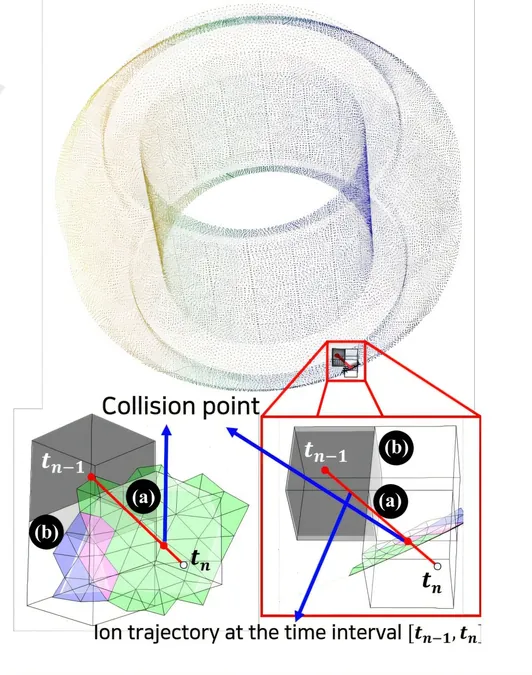
Revolutionary Algorithm Inspired by Video Games Takes Fusion Technology to New Heights!
2025-04-23
Author: Wei Ling
Game-Changing Innovation in Fusion Research
In an exciting breakthrough for nuclear fusion, researchers have unveiled a groundbreaking algorithm designed to detect high-speed particle collisions, drawing inspiration from video game technologies used for hit detection. This advancement promises to supercharge the safety and efficiency of future fusion reactors!
A Collision Detection Marvel
Led by Professor Eisung Yoon at UNIST's Department of Nuclear Engineering, the team has developed an innovative collision detection algorithm that dramatically enhances the speed of identifying high-speed particle collisions in virtual fusion systems. Their findings were proudly published in the journal Computer Physics Communications.
Speeding Up Detection by 15 Times!
When tested on the Virtual KSTAR (V-KSTAR), a digital twin of the Korean Superconducting Tokamak Advanced Research (KSTAR) experiment, this cutting-edge algorithm showcased a detection speed up to 15 times faster than traditional methods. Imagine the possibilities—this technology could redefine the future of fusion energy!
Unlocking the Power of Fusion Energy
Fusion energy, often dubbed 'artificial sun energy', relies on the injection of high-energy neutral particles to heat reactor cores to sun-like temperatures. However, errant particles can collide with reactor walls, causing potential damage. Here’s where the new algorithm shines by efficiently managing collision detection and ensuring system stability.
How Does It Work?
Blending collision detection techniques from the gaming world, the algorithm operates 15 times faster than the conventional Octree method, which breaks space into sections for monitoring particle presence. Instead of constant calculations for every particle, the new algorithm only computes when necessary—eliminating roughly 99.9% of computations with smart arithmetic! This allows for efficient tracking even in the complex 3D structures of fusion reactors.
Enhancing Visualization in Fusion Design
With this innovative algorithm, the V-KSTAR’s display highlights heat concentration areas on the reactor’s inner wall, empowering designers—regardless of their expertise—to pinpoint risk zones effortlessly. Professor Yoon emphasizes that this technology boosts the Korean Institute of Fusion Energy’s (KFE) neutral particle beam simulator capabilities.
What Lies Ahead?
The future looks bright as the researchers plan to utilize GPU supercomputers for even faster processing speeds. This next step could unlock high-speed computations essential for unfolding the full potential of fusion energy projects.
Stay tuned as this revolutionary algorithm paves the way for a new era of nuclear fusion, making the dream of limitless clean energy a step closer to reality!


 Brasil (PT)
Brasil (PT)
 Canada (EN)
Canada (EN)
 Chile (ES)
Chile (ES)
 Česko (CS)
Česko (CS)
 대한민국 (KO)
대한민국 (KO)
 España (ES)
España (ES)
 France (FR)
France (FR)
 Hong Kong (EN)
Hong Kong (EN)
 Italia (IT)
Italia (IT)
 日本 (JA)
日本 (JA)
 Magyarország (HU)
Magyarország (HU)
 Norge (NO)
Norge (NO)
 Polska (PL)
Polska (PL)
 Schweiz (DE)
Schweiz (DE)
 Singapore (EN)
Singapore (EN)
 Sverige (SV)
Sverige (SV)
 Suomi (FI)
Suomi (FI)
 Türkiye (TR)
Türkiye (TR)
 الإمارات العربية المتحدة (AR)
الإمارات العربية المتحدة (AR)